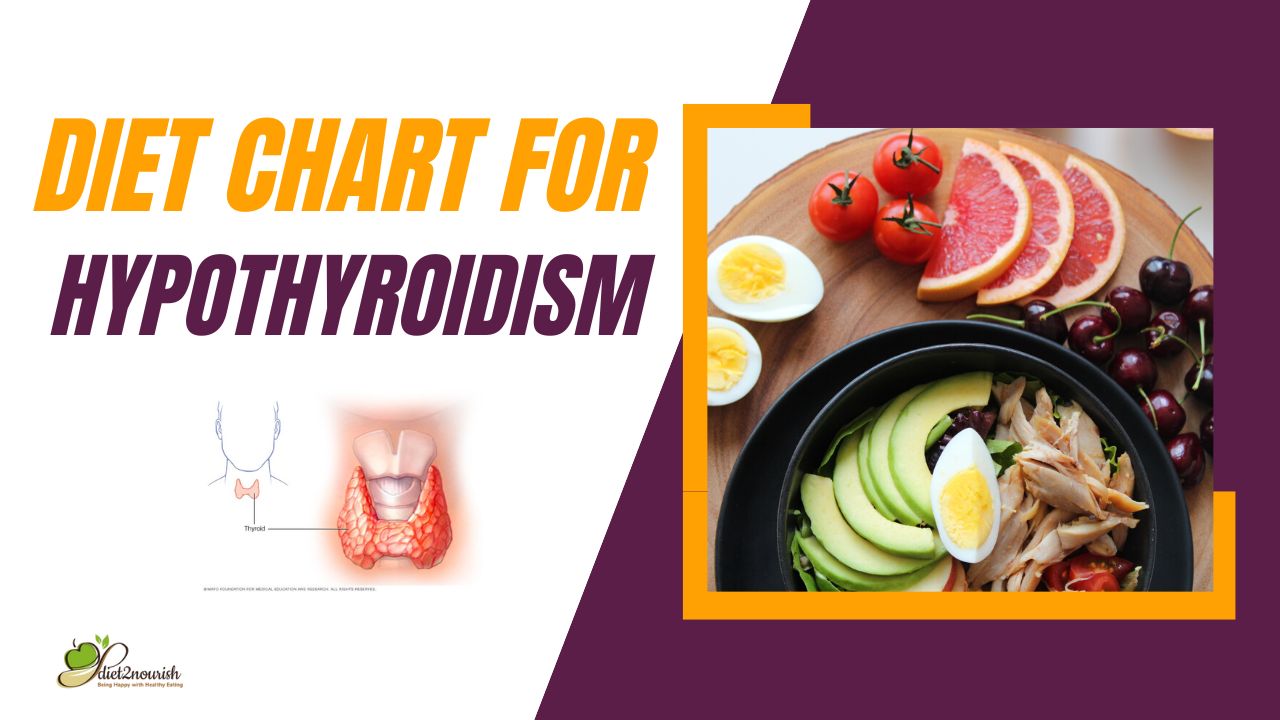Why Diet Chart for Hypothyroidism
Hypothyroidism, also known as an underactive thyroid, is a condition in which the thyroid gland does not produce enough hormones to regulate the body's metabolism. This can lead to a variety of symptoms, including fatigue, weight gain, hair loss, and dry skin. Diet plays an important role in managing hypothyroidism, and making certain dietary changes can help alleviate symptoms and improve thyroid function. In this article, we will discuss a diet chart for hypothyroidism
Increase iodine intake: Iodine is a mineral that is essential for thyroid function, and a deficiency in iodine can lead to hypothyroidism. Foods that are rich in iodine include seaweed, seafood, dairy products, and iodized salt. However, it is important to consult with a healthcare professional before increasing iodine intake, as too much iodine can also be harmful.
Include selenium-rich foods: Selenium is a mineral that is important for thyroid health, as it helps convert T4 (inactive thyroid hormone) into T3 (active thyroid hormone). Foods that are rich in selenium include Brazil nuts, tuna, chicken, and eggs.
Eat a balanced diet: A balanced diet that includes a variety of whole foods is important for overall health and can also help manage hypothyroidism. Focus on incorporating fruits, vegetables, whole grains, lean protein, and healthy fats into your diet.
Avoid goitrogenic foods: Goitrogens are compounds that can interfere with thyroid function by blocking the absorption of iodine. Foods that are high in goitrogens include cruciferous vegetables such as broccoli, cauliflower, and kale, as well as soy products. While it is not necessary to avoid these foods completely, it is important to eat them in moderation and to cook them before consuming them.
Limit gluten intake: Some studies have suggested a link between hypothyroidism and gluten intolerance. While more research is needed in this area, some individuals with hypothyroidism may benefit from limiting or eliminating gluten from their diet.
Drink enough water: Dehydration can exacerbate symptoms of hypothyroidism, so it is important to drink enough water throughout the day. Aim for at least 8-10 glasses of water per day.
Avoid processed foods and sugar: Processed foods and sugar can contribute to inflammation and may worsen symptoms of hypothyroidism. Instead, focus on consuming whole, nutrient-dense foods.
Sample Hypothyroidism Diet Chart:
Breakfast:
- Oatmeal with nuts, seeds, and berries
- Greek yogurt with fresh fruit
- Whole grain toast with avocado and eggs
Lunch:
- Salad with mixed greens, grilled chicken, and vegetables
- Brown rice bowl with roasted vegetables and grilled tofu
- Lentil soup with whole grain bread
Snack:
- Apple slices with almond butter
- Hummus with vegetables
- Hard-boiled egg with whole grain crackers
Dinner:
- Grilled salmon with quinoa and roasted vegetables
- Chicken stir-fry with brown rice and vegetables
- Lentil and vegetable curry with brown rice
In conclusion, a well-balanced diet that includes a variety of whole foods is important for managing hypothyroidism. Incorporating iodine-rich foods, selenium-rich foods, and avoiding goitrogenic foods can help support thyroid function. It is important to work with a healthcare professional to create a personalized diet plan that is tailored to your specific needs and health goals.


Comments
Post a Comment